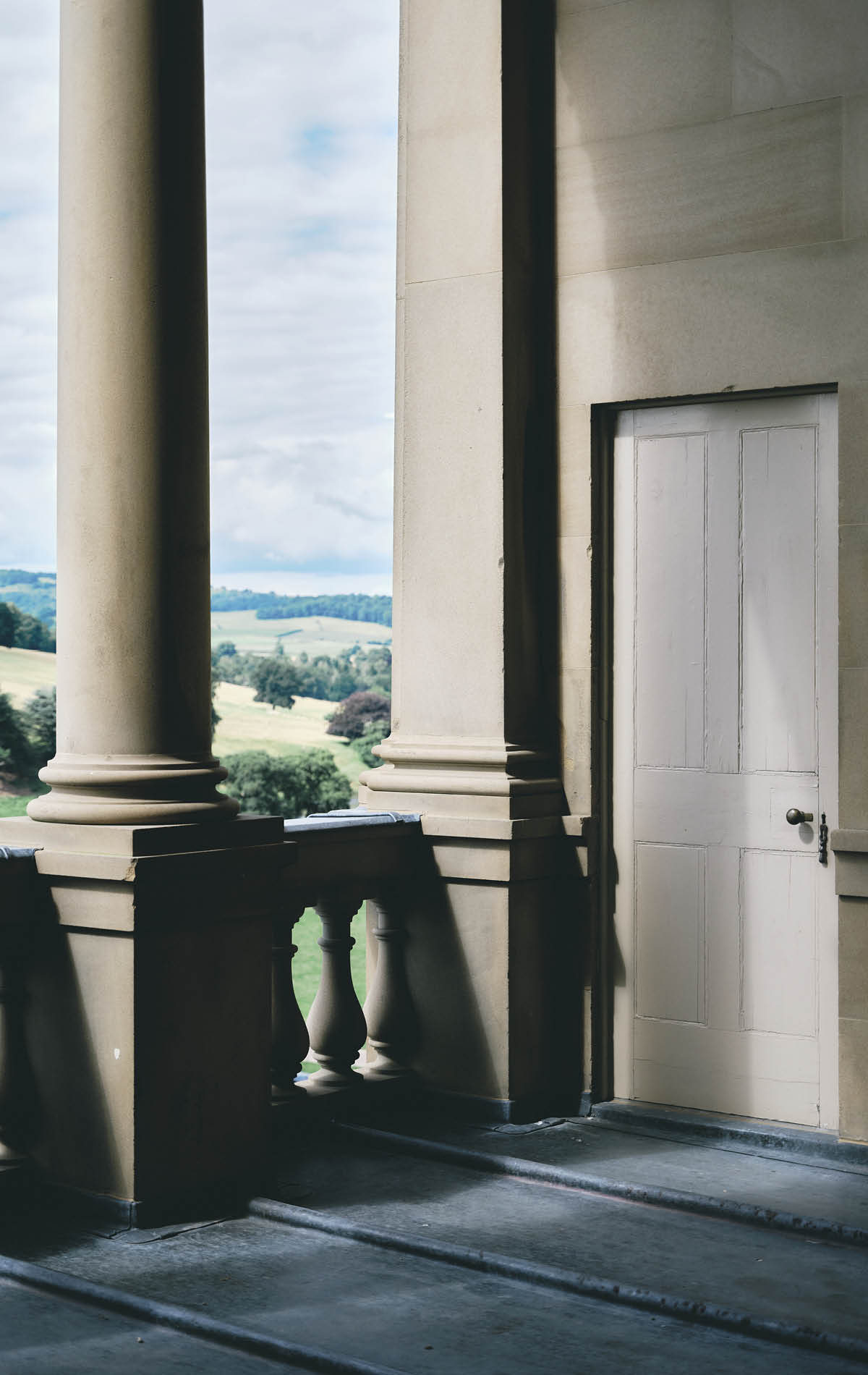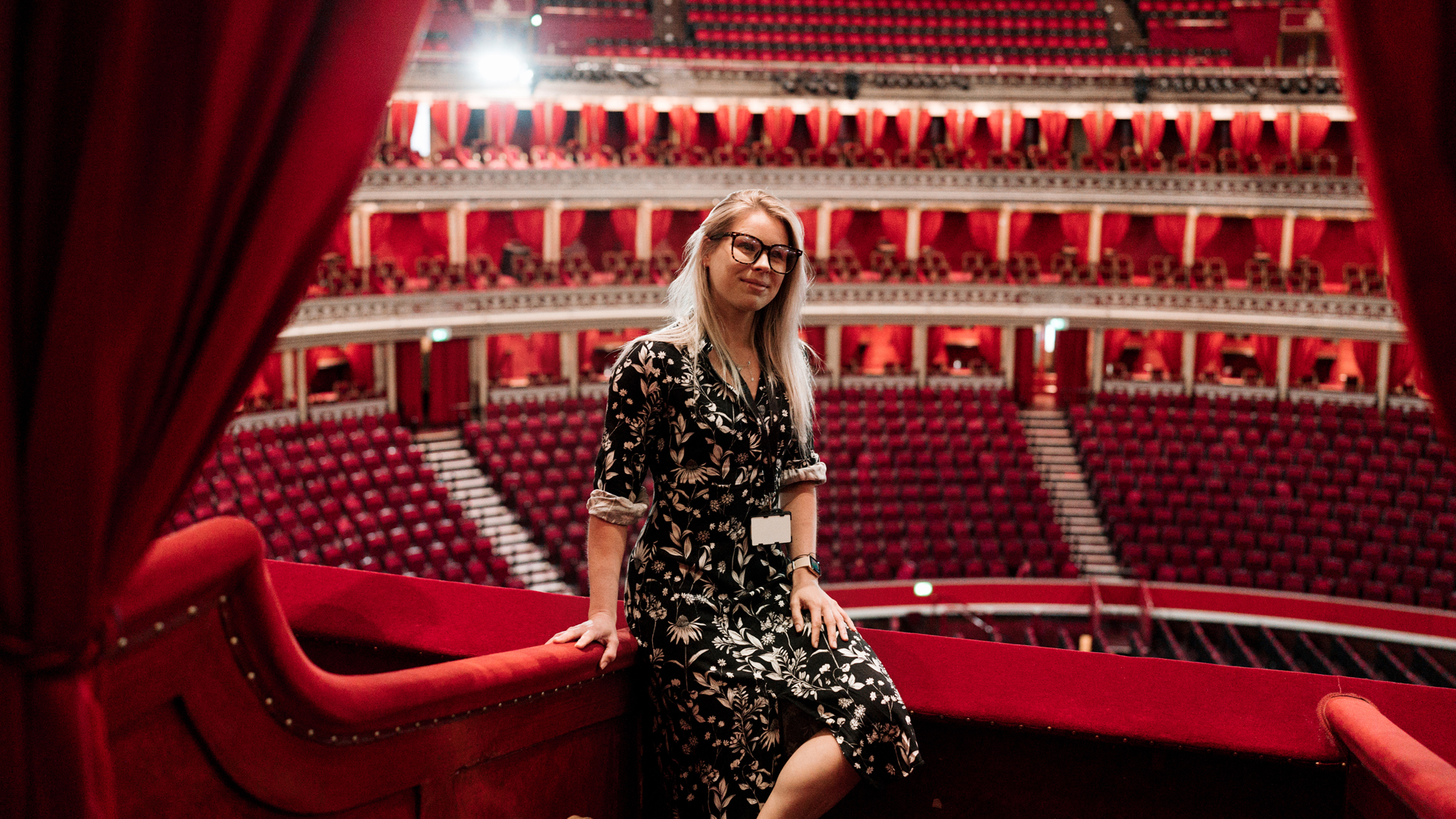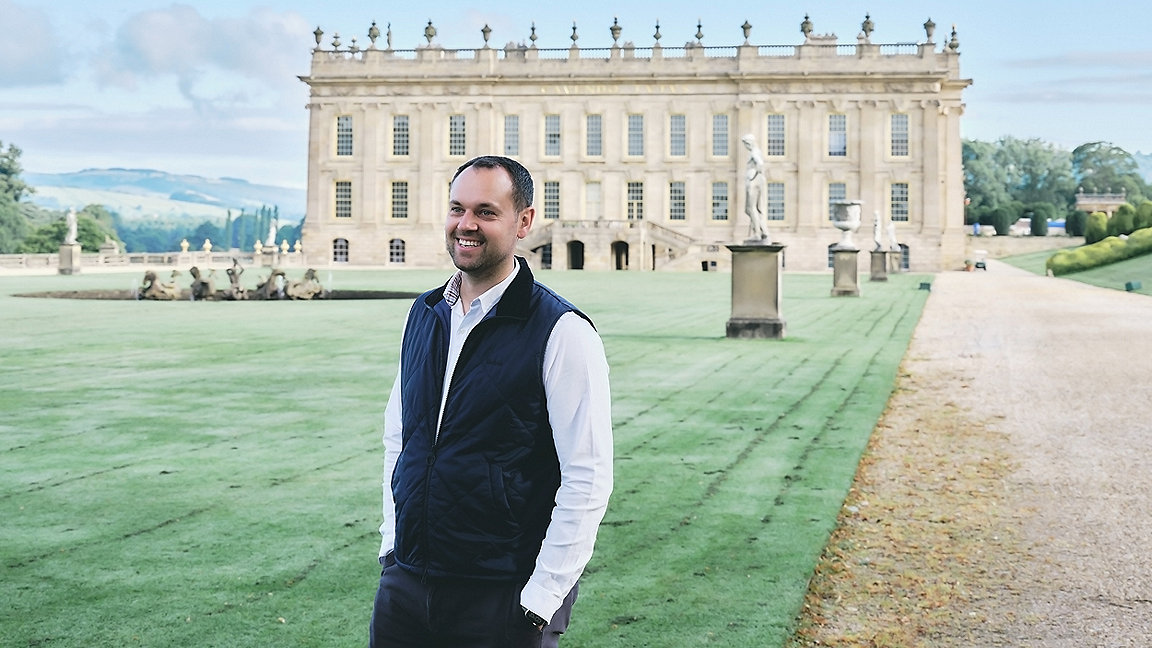
Photography by Jasper Fry
“Did you know that the majority of bananas we eat today are descended from a plant grown at Chatsworth?” asks Robert Harrison MRICS, head of operations at Chatsworth House.
He’s just eight months into his job at the 471-year-old stately home in Derbyshire, England, and it’s his favourite fact about the estate. The story of the Cavendish banana, named after the family that has occupied Chatsworth House for 16 generations, so aptly depicts its rich history and influence.
Grown in 1830 by its head gardener, Cavendish banana plants were spread across the world by missionaries and have since become a dominant variety in the global banana industry. These ripples across time are something that Harrison, in his role of maintaining, restoring and preserving the estate, wants to ensure can still be seen and felt for the next 100 years.
The Cavendish banana is still grown at Chatsworth today, with the plants in the display greenhouse, one of the many structures under Harrison’s purview. The chartered surveyor looks after Chatsworth House, the Grade I listed stately home and its stables. It sits in an 1,822-acre park, including a 105-acre garden, farmyard and playground.
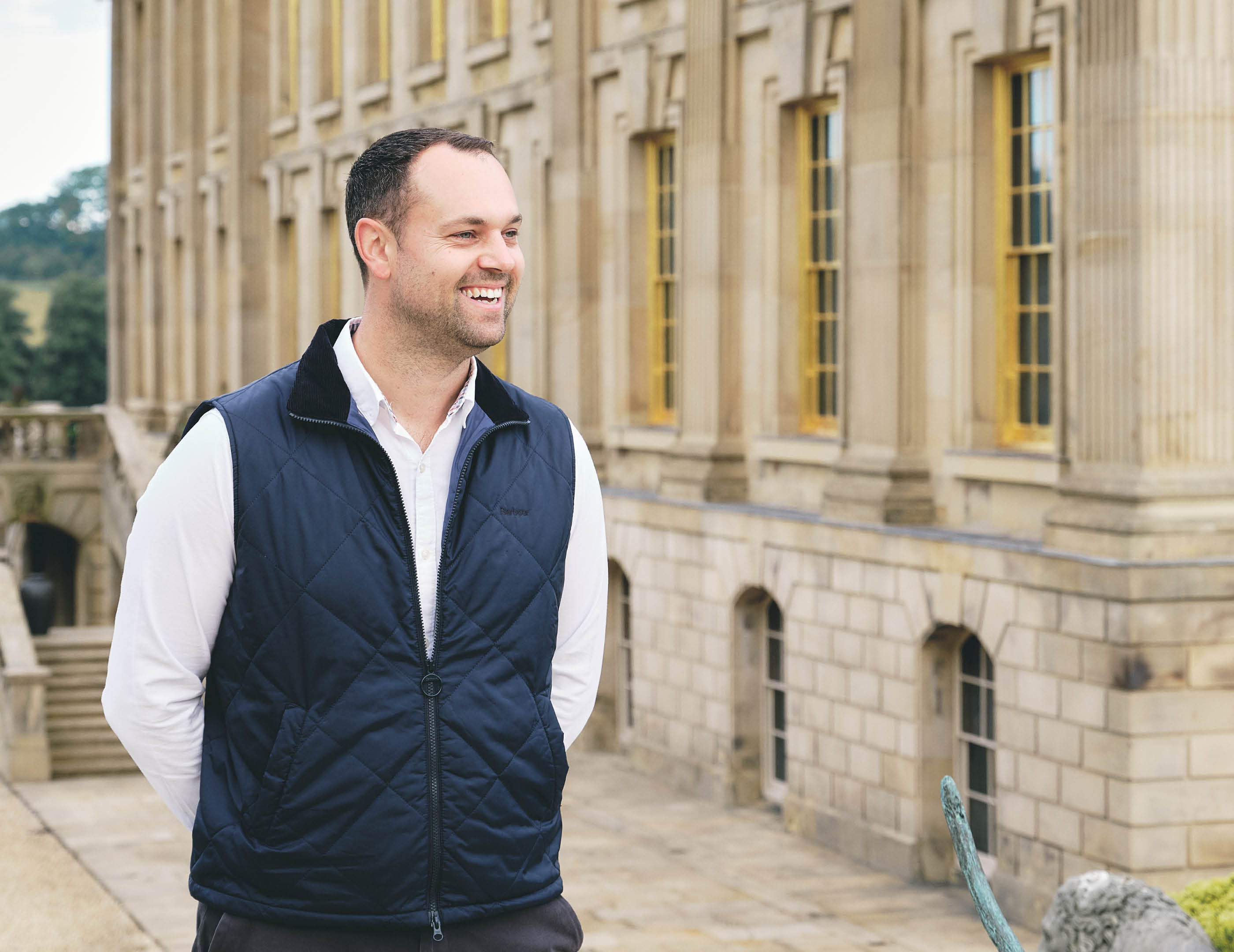

Scattered across the estate are 48 other listed buildings, nine of which are Grade I. The house, built in 1552, plus its garden and farmyard, attracts 600,000 visitors a year. It is not, he concedes, a typical surveyor job.
Harrison says he chose his profession because he’s always been interested in buildings and how they were constructed – in his spare time he’s even built an extra bedroom at his house. After a degree at Sheffield Hallam University, he joined Nottingham-based surveyors Faithful+Gould for nine years. He spent five of these seconded to Derby City Council where his association with historic building projects began, working on museums, theatres and a Grade II listed primary school.
Looking after Chatsworth House and its buildings is a never-ending task that requires all-year maintenance and constant vigilance. Harrison says he is continually assessing its assets and checking for signs of leaks or deterioration. He jokingly describes maintaining Chatsworth as “like painting the Forth Bridge”, but for him the goal is not simply to tick off tasks, it is about preserving history for future generations.
“We're talking about listed buildings here, which need a lot of care and a lot of money spending on them” Robert Harrison MRICS, Chatsworth House

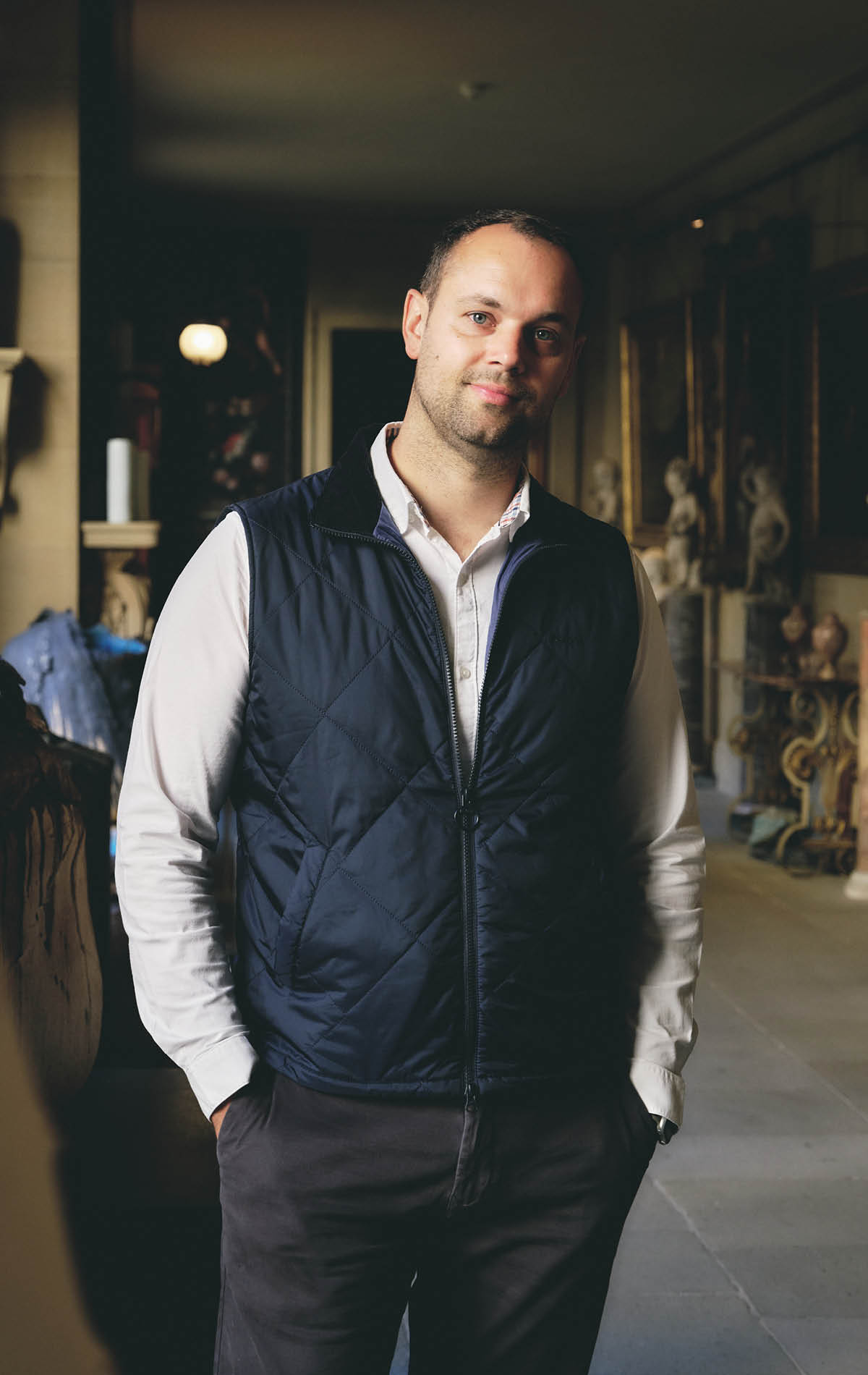

“I get involved in everything – from litter picking and waste management all the way through to multimillion pound projects” Robert Harrison MRICS, Chatsworth House



His role is expansive. On one side he looks after house operations, which includes an in-house team of professionals that constantly maintain the house and estate. Alongside this, he also manages a team of legal and statutory compliance, fire safety and security officers and car parking staff.
On the other side he is managing the estate’s capital investment programme, including an annual planned maintenance schedule, and conservation projects that range from £400,000 to the £7m plus restoration of the 327-year-old Cascade, one of Chatsworth’s most-loved water features. “I get involved in everything – from litter picking and waste management all the way through to multimillion pound projects and everything that falls in between that is property related,” he says.
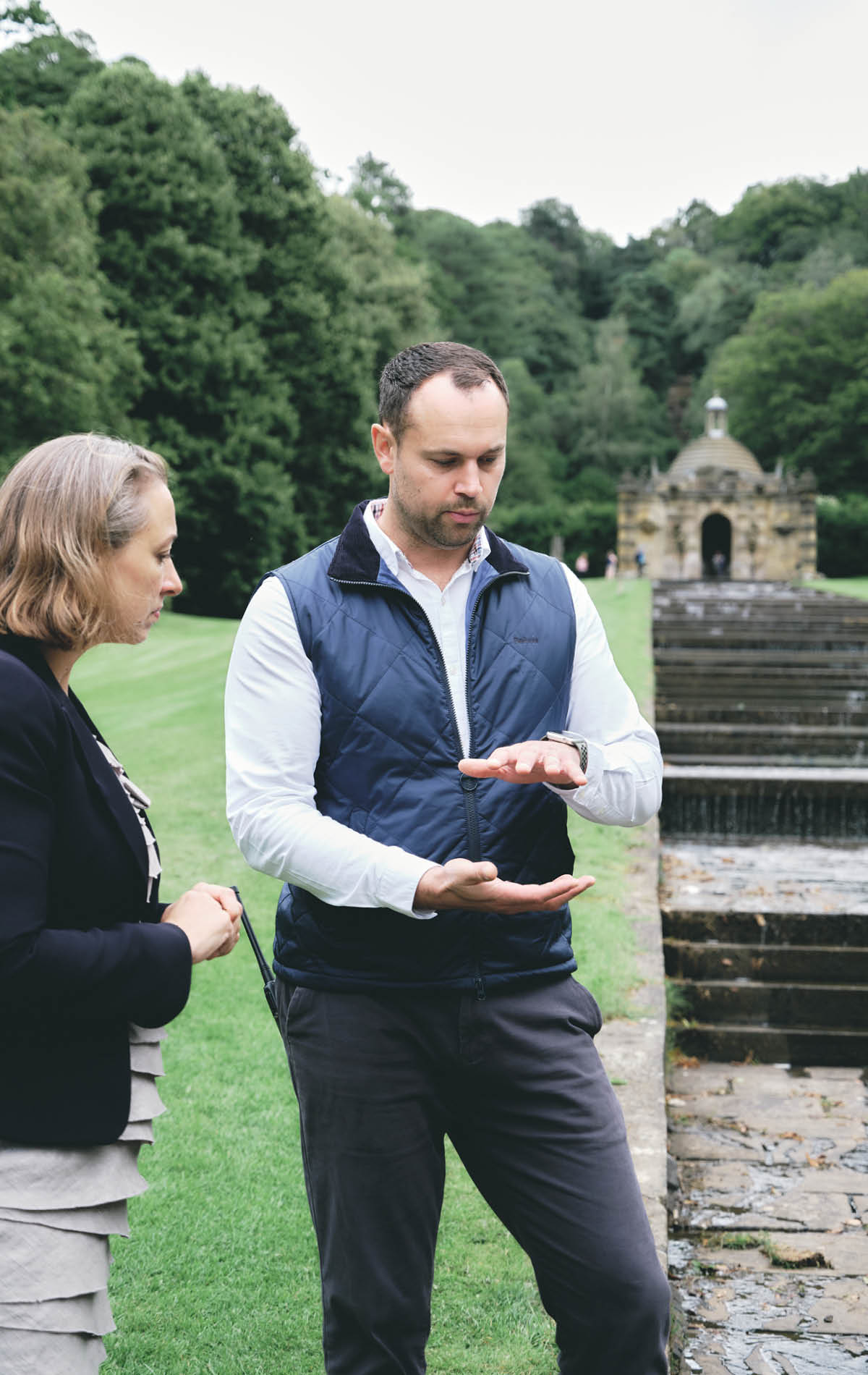

“As a surveyor I look at it and think, ‘I want to refurbish it all’, but it's about that balance between stabilisation and restoration” Robert Harrison MRICS, Chatsworth House
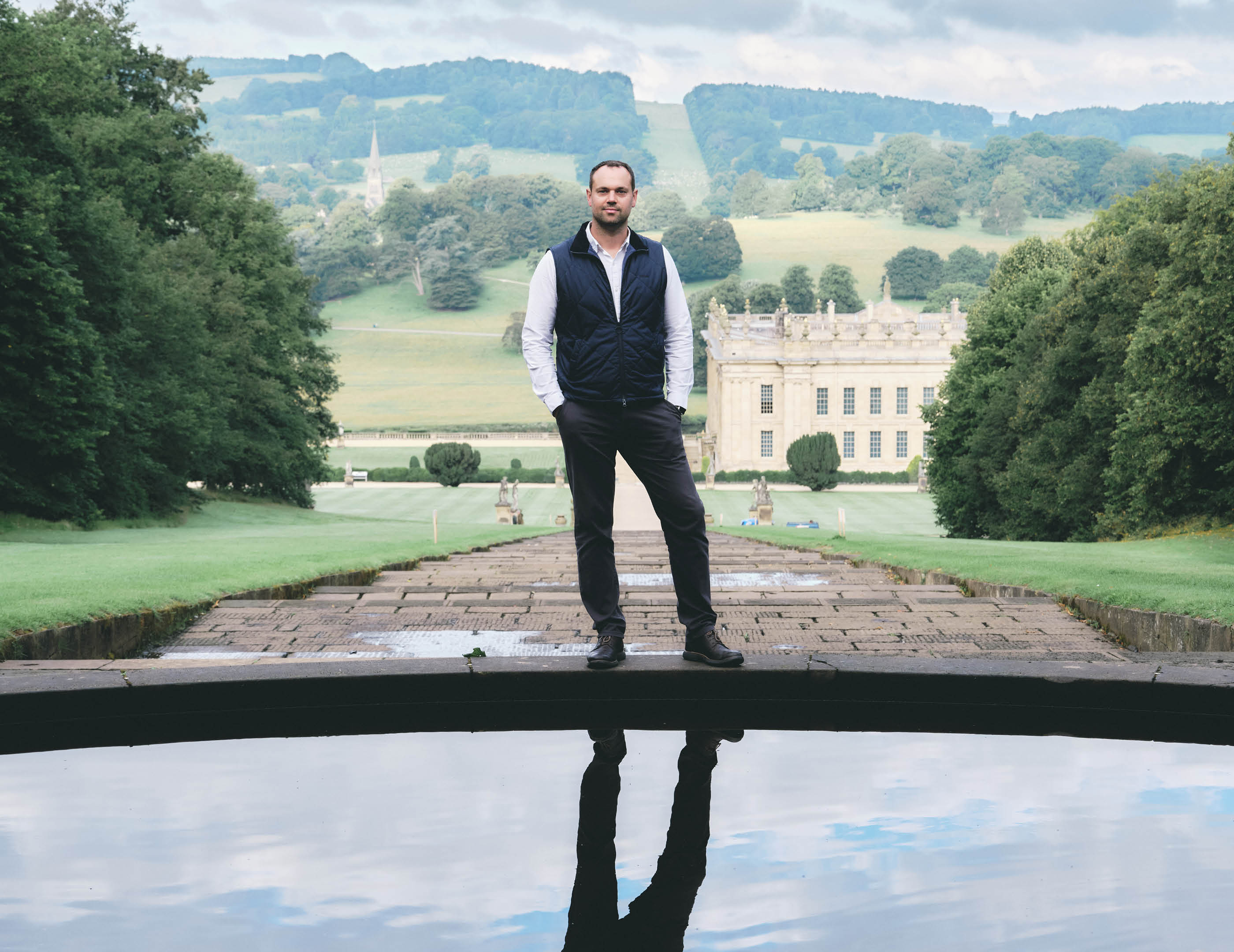
Historical importance
While Harrison describes Chatsworth as a dream job that he “just had to apply for,” working in a heritage setting means ensuring that the conservation and the retention of the estate’s historical importance runs through every decision he makes. “We're talking about listed buildings here, which need a lot of care and a lot of money spending on them,” he says. “But the challenge for me is prioritising what we do first. As a surveyor I look at it and think, ‘I want to refurbish it all’, but it's about that balance between preservation and restoration while looking to make improvements in the maintenance of Chatsworth.”
He says he always bases his prioritisation on “health and safety first”, assessing whether the building is a danger to the public, or at risk of rapid deterioration. Its historical significance also plays a major part. He points to the Elizabethan Wall, a 16th century stone retaining wall in the gardens that is badly in need of repair, as a prime example. Already closely monitored for safety, he says it will have to be restored painstakingly in sections. “It’s of historic importance because it’s Elizabethan and a key asset for us,” he adds.





It’s crucial that the estate continues to progress. “You’ve got to keep up,” says Harrison. But it’s difficult balancing the demands of the past and the present. “I think ultimately there's an element of improvement you want to make but you've always got that conservation hat on,” he explains. “So, you've got to think about how you can deliver in an ever-changing modern world, while making sure that we don't lose the historic importance.” He says sustainability is a good example of this, with Chatsworth’s water turbine utilising the natural flow of water down from the moors into the gardens to power the house’s electricity. The estate also sources most of its material locally, using its own quarry for stone. But there are limits. “When it comes to wind farms within a heritage setting, where would put those?”
Working in such a historic environment brings multiple pressures: maintaining all the buildings within the confines of conservation legislation; preserving the visitor experience; and navigating around a family that still lives in the house. “It's quite a different dimension from what’s the norm for any surveyor – having a family wanting to understand what’s happening in their home and what you’re doing,” says Harrison. Communication, he adds, is an important part of his role.
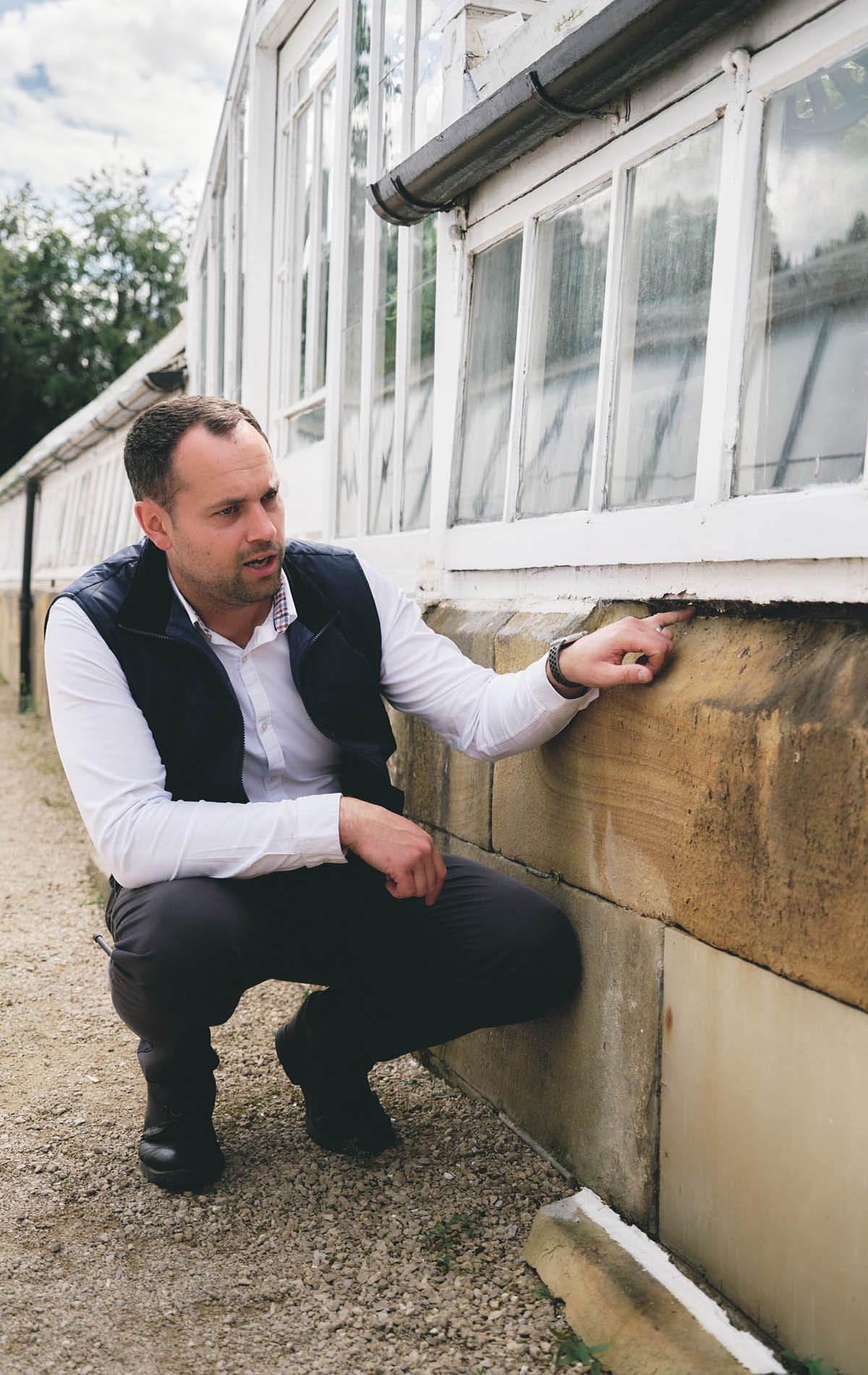

“When you put a spade in the ground here, you usually find something” Robert Harrison MRICS, Chatsworth House
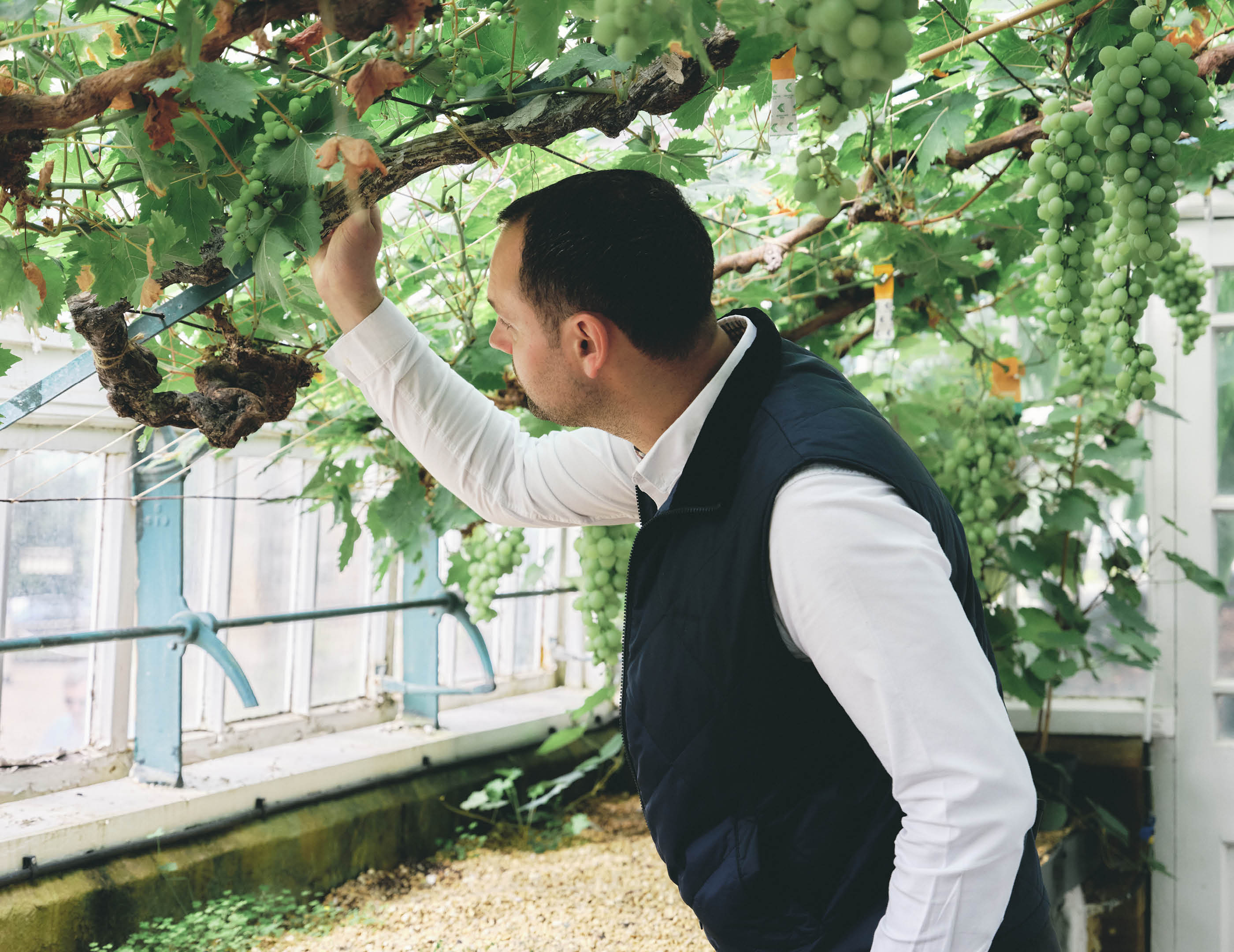
Suited to the job
Restoration projects can take months to come to fruition, with complex layers of statutory compliance to work through and the inevitable ‘unknowns’ of working with ancient buildings. Harrison says, along with multiple stakeholders, he also works closely with archaeologists, “because when you put a spade in the ground here, you usually find something”. He concedes that you must be a certain type of person to work in this setting and describes himself as both laid back, but very detail oriented. “I’ve always been quite specific about how I like things to look, and I think that is who I am,” he says. “With listed buildings, the detail is really important, so it really helps me in my career.”
The one thing he does genuinely worry about is of a major incident and says preventing that occurring on the estate is a major focus for him.
There is also the question of funding, which Harrison says is always at the back of his mind. The estate is run by a registered charity, the Chatsworth House Trust. The trust is dedicated to preserving the house, its collections, garden, woodland and parkland, and relies upon visitor admission from ticket sales for the majority of its funding. “There’s only so much money, and that’s what prioritisation is about,” he says. He adds that the house remains in good condition after a £32m restoration completed in 2018 and his long-term plan is to ensure there is a maintenance strategy for the other significant assets across the wider estate.
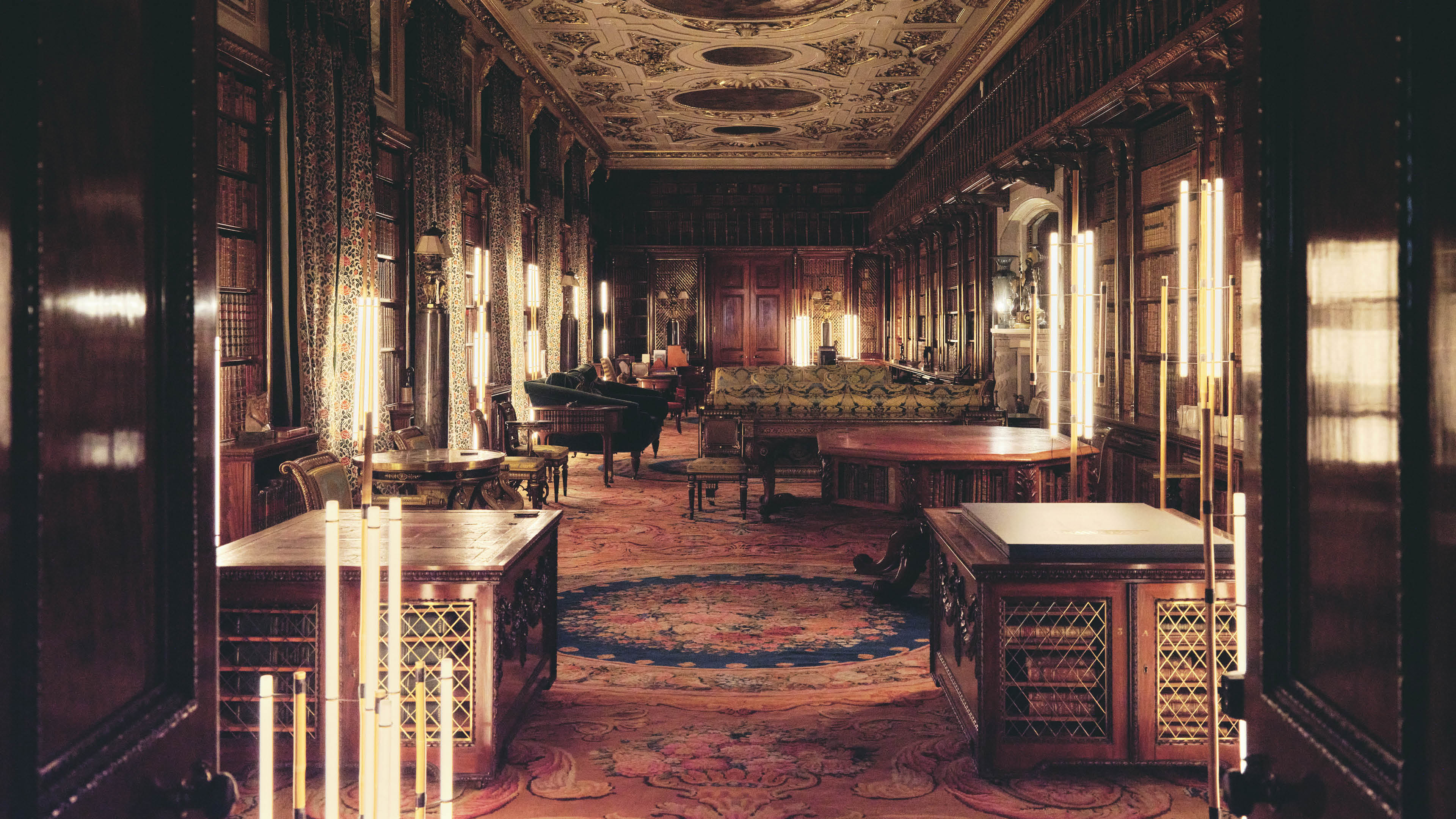

Just as conservation is the thread that runs through Chatsworth, it is also the thread that runs through Harrison’s career. Before Chatsworth, Harrison spent six years as head of property at the YHA (Youth Hostel Association). Here he looked after 120 properties across England and Wales and says there are strong similarities between the roles: looking after listed and historic buildings with significant footfall, delivering capital projects, compliance and managing a team. But, despite enjoying it, it involved a lot of travelling. Now he has a 15-minute commute across the Peak District listening to the birds or watching the deer and is back at home in time for dinner with his young family.
He also has a long personal history with Chatsworth. Born in Dronfield, Derbyshire, where he still lives, he visited Chatsworth House as a child and began taking his own family for outings to the estate. It remains a place he likes to relax with family, his son having just learned to ride his bike there.
He’s immensely proud to be playing such a major part in its preservation. “Replicating or repairing something back to the same level of detail is a very important part of the role at Chatsworth. To stand back and actually be able to say ‘we’ve conserved it for future generations’.”


